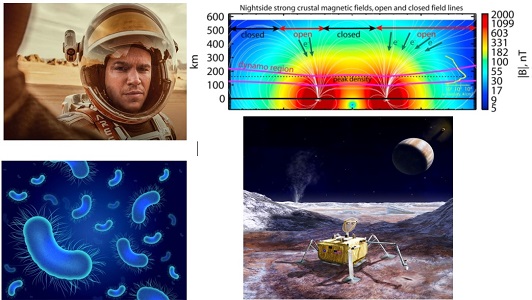 |
|
Astrophysical and Planetary Sciences Colloquium
Tuesday, April 09, 2019 at 4:00 PM JILA Auditorium Robert Lillis, Berkeley "Particle Precipitation in Planetary Environments: Ionospheres, Matt Damon, and Dead Bugs"  Abstract:The precipitation of charged particles from space into planetary environments is as important as it is ubiquitous in the solar system, causing myriad effects on planetary atmospheres, surfaces, and biomatter. In this seminar I’ll focus on two environments in particular: Mars and icy moons. First, precipitation of sheath and tail electrons is the primary source of the ionosphere and discrete aurora on the nightside. Solar energetic particles cause low altitude ionization and radar blackouts in the Martian atmosphere and, if energetic enough, can (along with cosmic rays) be a significant radiation hazard for future Matt Damons on the surface. Here I’ll describe what data from the MAVEN orbiter and Mars Science Laboratory rover missions have taught us about the effects of low and high energy charged particles at Mars, and what work remains. Second, at icy moons such as Europa and Enceladus, any search for biological matter bubbling up from subsurface oceans must be accompanied by robust radiation characterization in order to interpret the condition, or lack, of biological matter that may be found. Here I will describe why this characterization is important and present a design for a coincidence-stack radiation detector that is designed for Europa but can operate on any planetary surface.
|